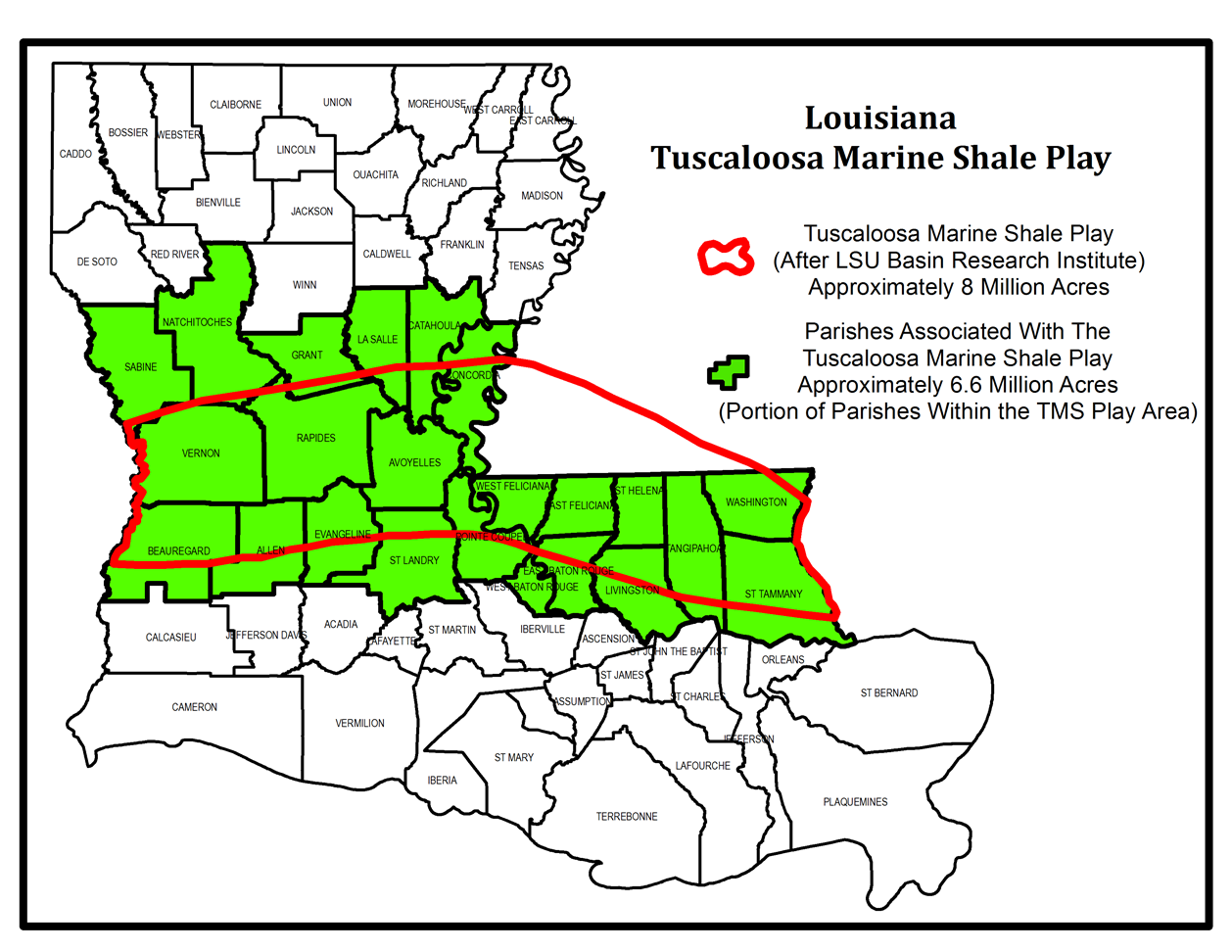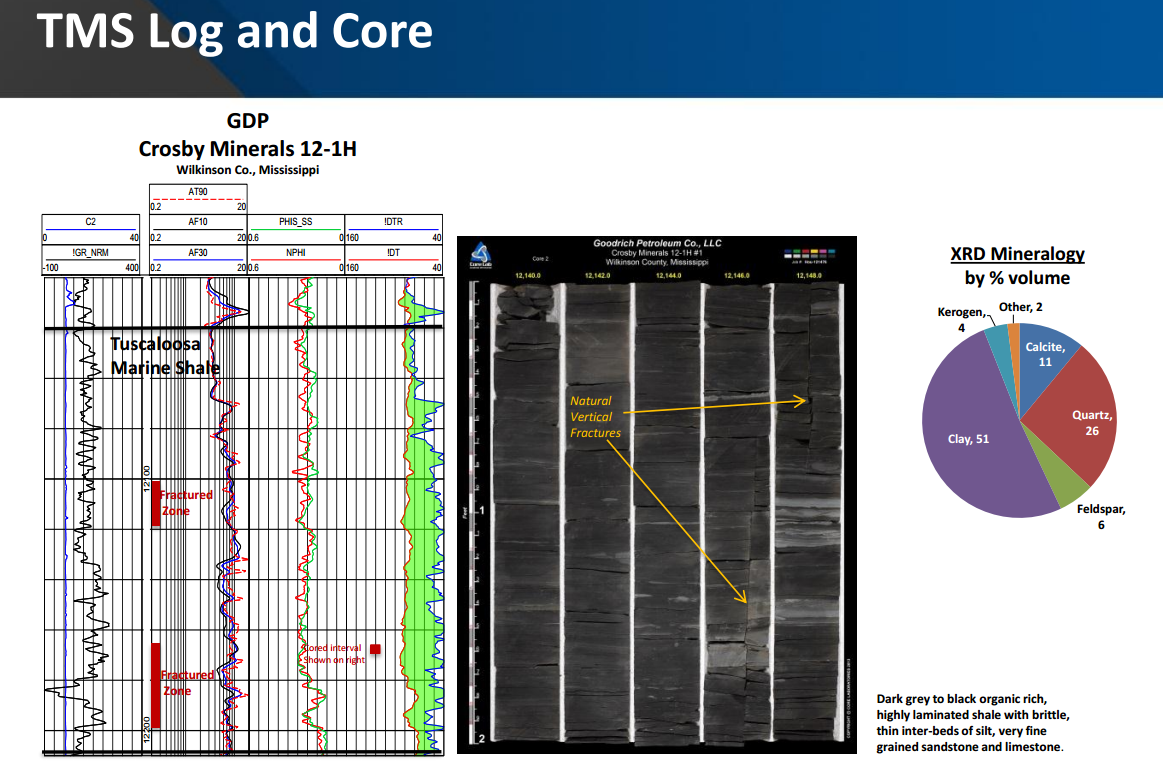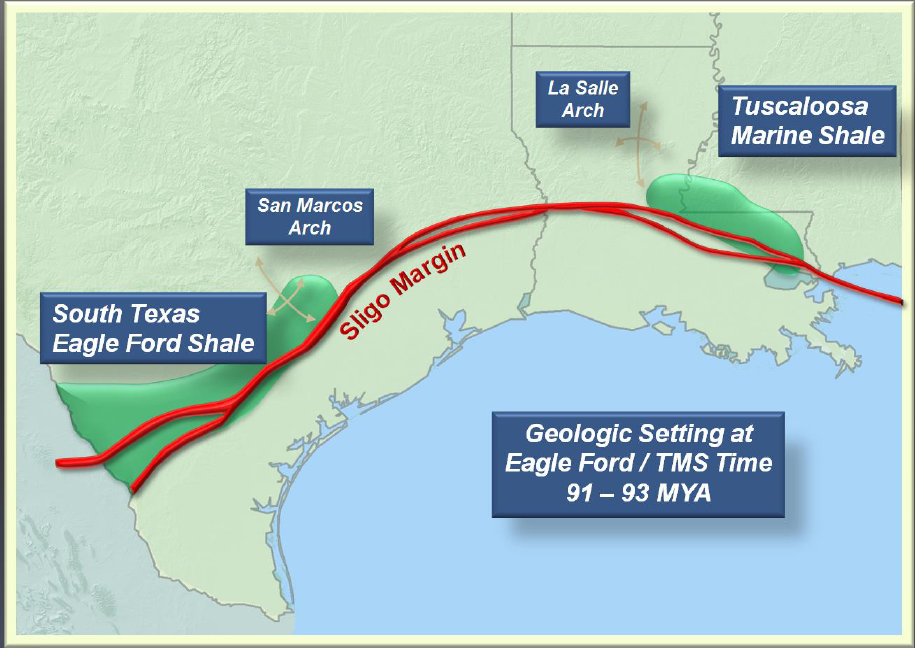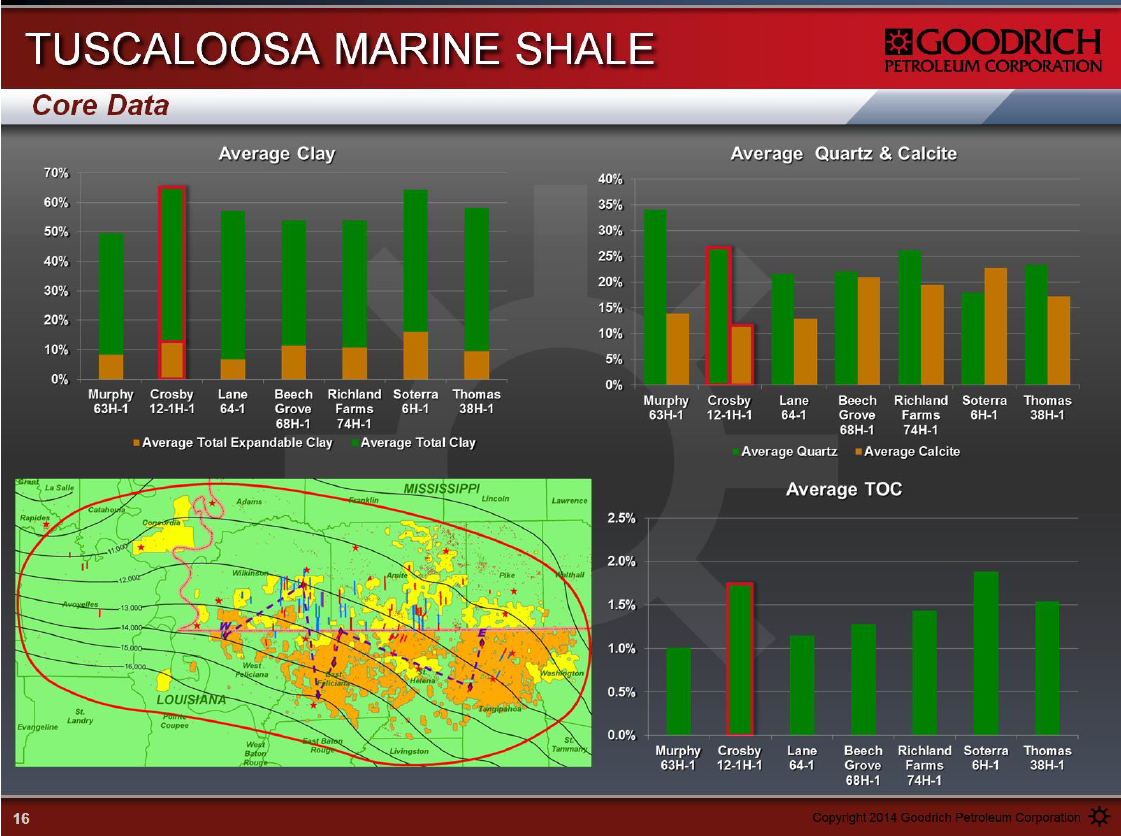The Tuscaloosa Marine Shale is a 2.7 million acre emerging horizontal oil play with vast quantities of oil contained in this powerful Cretaceous-age source rock. It created quite a stir in the industry two and a half years ago when Devon, one of the early entrants in the play, announced a significant acreage position and a plan to drill several horizontal wells.
Since then, over half a billion dollars has been spent by E&P companies on leasing, geo-science and the drilling of over twenty horizontal tests. The Tuscaloosa Marine Shale has been closely watched by the industry and investment community. While the assessment has been plagued by daunting drilling-related issues, delays, and high well costs, several wells have produced very impressive initial flow rates.
Tuscaloosa Marine Shale - Geologic Setting
Source : Goodrich Petroleum , PetroleumResearch.org
Tuscaloosa Marine Shale - Core Data
Source : Goodrich Petroleum , PetroleumResearch.org

Encana, Devon, and Goodrich Petroleum are currently the three largest leaseholders in the central part of the Tuscaloosa Marine Shale. On the western flank of the play, EOG Resources (EOG), privately held Indigo Minerals, and Halcon Resources (HK) have also built significant positions, although those three companies may also be focusing their exploration effort on the Central Louisiana Eagle Ford, a different member of the same stratigraphic group. Contango Oil & Gas is among recent entrants into the play with a relatively small leasehold.
Drilling Challenges
The nearly two dozen tests drilled in the play to date seem to confirm that the most productive section within the 100-200 foot thick Tuscaloosa Marine Shale zone is located close to its bottom (high TOC is detectable from well logs and confirmed by core analyses). (full size image: Generalized Lithostratigraphic Chart)
The optimal landing target for laterals appears to be approximately 15 to 20 feet off the bottom of the TMS zone. (full size image: High Resistivity Log Characteristics)
According to Goodrich Petroleum, approximately 40 feet off the bottom of the Tuscaloosa Marine Shale and immediately above the target interval, there is a distinct, ~10 foot-thick, highly naturally fractured geologic interval. Its presence has generally been viewed as a positive due to expected fracture conductivity with potentially significant amounts of oil contained in the fractures. This fractured interval has also been the source of challenging drilling issues– and subsequent costs – associated with wellbore instability. The rock in this interval has shown a tendency to cave into the lateral wellbore, especially when the interval is traversed at a high angle. (This type of “sloughing” is not uncommon when drilling in fractured rocks). As a result, many wells have experienced significant mechanical difficulties and substantially longer drill times than expected.

The high overpressuring (>0.7 psi/ft), 12,000-14,000 foot depth and high temperatures alone are more than enough to make the Tuscaloosa Marine Shale challenging for drilling. Drill bits, bottomhole assemblies and mud motors may need to be replaced fairly often while drilling the lateral. The wellbore instability within the fractured interval has massively complicated the process: the time lost just on washing and reaming can be very significant, and the risk of a collapsed well bore or stuck pipe or casing is very high. Goodrich Petroleum commented on the delays while drilling their Denkmann well (which is now being sidetracked due to mechanical problems):
"Every time we came up while in the lateral and went back down, we couldn't necessarily start making new hole. We had to clean and wash to get back to where we were. And that's the real drag time."
Tuscaloosa Marine Shale (TMS) News
-
Goodrich Petroleum Third Quarter 2021 Results
November 04,2021 -
Goodrich Petroleum Second Quarter 2021 Results
August 06,2021 -
Goodrich Petroleum First Quarter 2021 Results
May 06,2021 -
Goodrich Promotes McWatters to CFO / CAO Role
December 16,2020 -
Goodrich Petroleum Second Quarter 2020 Results
August 11,2020 -
Goodrich Petroleum First Quarter 2020 Results
May 07,2020 -
Goodrich Talks Q3 Results; Defers Completions to Q1 2020
November 07,2019 -
Goodrich Petroleum Details Q2 Results
August 06,2019 -
Australis Touts Latest TMS Well Results; Oil Production Above Type Curve
June 11,2019



